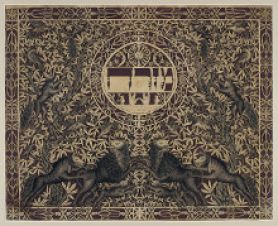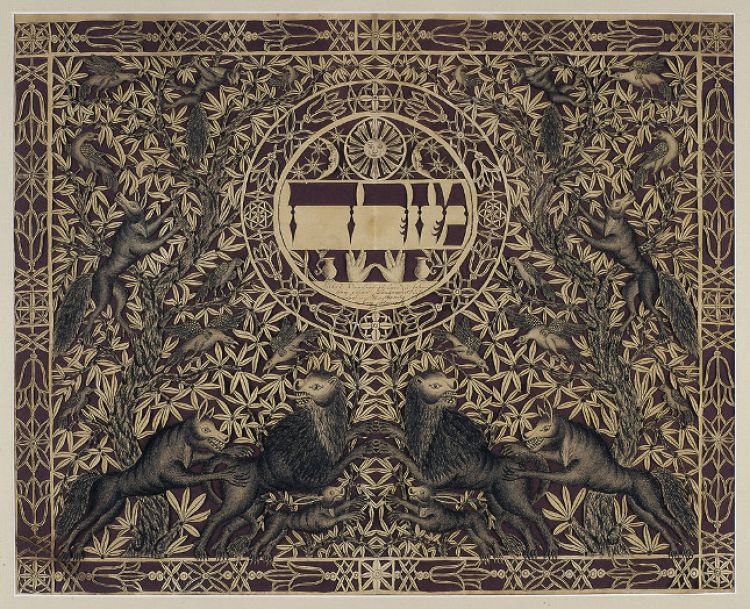Mizrah

In Alsace, until the 19th century, Jewish communities were mainly established in rural areas, and therefore, closely integrated into village society. Cohabitation between Jews and Christians was effective, even if it was not always free from friction.
Hanging on the wall inside Jewish houses, the Mizrah, "Orient" in Hebrew, indicates the direction of Jerusalem, towards which Jewish people turn to pray. In the central circle, the sun and crescent moon surmount the word "Mizrah". Cohanim hands and Levite pitchers appear above the signature, lions are being attacked by wolves and other animals can be seen scattered among the foliage.
The technique called in French canivet, or cutting with a penknife, was practiced in Central Europe. Ashkenazi Jews used it frequently in the 19th century to make religious pictures decorating their interiors, a practice comparable to the function of the Géttelbrìef or baptismal wish in Protestant household imagery. Elias Danhauser was a teacher in Horbourg but he is recorded as saying that he also traded in this type of image.
